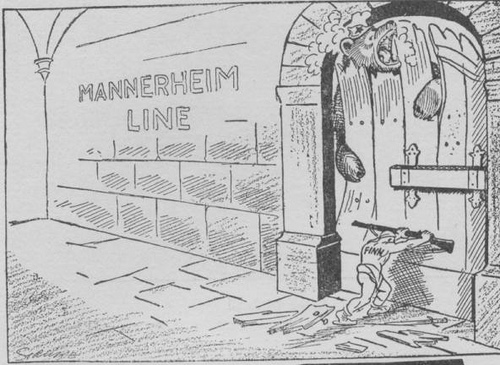
In The Politics of Innovation, American academic Mark Zachary Taylor grapples with the implications of Cardwell’s Law – which states scientific and technical innovation in any particular country to be a matter of a short, unsustainable burst of creativity. How can policy-makers grow a vibrant, productive science community, creating the patents, inventions and jobs that can drive a high-tech economy? Is it even possible to artificially generate a smart, inventive society? And why is it that some countries just seem to be better at innovation than others? Why is it, for example, in the post-war period, that Japan achieved such leaps and bounds? Why not France, which had better access to markets?
Taylor’s answer, easily stated but robustly defended in close and detailed arguments, is that nations are prepared to pay the price, deferring comforts and investing in research, if they are in a state of “creative insecurity”. This requires a country to perceive external threats as more pressing and important than the politics of internal tension.
 Taylor argues that far too many policy-makers assume that innovation is a black box, into which a state pours money, waiting expectantly by the exit valve for patents and innovation to come tumbling out. As his title implies, politics is a vital consideration in the way that innovation is funded, assessed and implemented, with Taylor offering as one example the old proverb about the four blind men feeling an elephant. All of them are observing quantifiable elements of the animal, but in academic terms, none of them are citing each other. They are ignorant of the discoveries being made elsewhere – their own hang-ups and blind-spots are preventing them from getting to the task in hand, which is understanding the elephant in the room.
Taylor argues that far too many policy-makers assume that innovation is a black box, into which a state pours money, waiting expectantly by the exit valve for patents and innovation to come tumbling out. As his title implies, politics is a vital consideration in the way that innovation is funded, assessed and implemented, with Taylor offering as one example the old proverb about the four blind men feeling an elephant. All of them are observing quantifiable elements of the animal, but in academic terms, none of them are citing each other. They are ignorant of the discoveries being made elsewhere – their own hang-ups and blind-spots are preventing them from getting to the task in hand, which is understanding the elephant in the room.
The topic, of course, is a minefield of potential triggers for racism, triumphalism, imperialism, and misguided cultural relativism – even the opening question, of why some states are better at innovation than others, is open to abuse by demagogues and bigots, leading Taylor to predict and pre-empt mis-uses of his conclusions. He is swift to point out the likely abuses of his data, starting with the suggestion that the best way to run a successful science and technology policy is to scare citizens into believing their country faces a threat from Evil Foreigners. In fact, argues Taylor with touching faith, people are not liable to be that stupid, at least not for long, and an informed population will soon see through a manufactured bogeyman. He points out, more hopefully, that there is no reason for the external threat to be human – a state is just as liable to make leaps in invention and innovation if it embraces the challenge of, say, coping with climate change.
He also has some compelling things to point out about the environment most likely to foster creativity. Taylor has no truck with the suggestion that some races are just dumber than others, discounting data from third-world countries that have more pressing subsistence priorities than, say, semiconductor research. His remaining data presents a persuasive picture of those countries that spend on scientific and technical development, and those countries that reap quantifiable rewards from doing so. The two data sets are not exact matches, and his argument focuses on possible reasons for this discrepancy.
Hollywood-style, nobody knows anything. Taylor considers the likely elements of randomness that turn some research exercises into “Easter egg hunts” with unclear objectives and unpredictable returns. But he also considers the likely effects of such strange attractors as military funding, a definite contribution to innovation in his native United States, but no longer in Russia, despite the latter country’s still-large arms budget.
Taylor’s conclusions are immediately applicable in the modern world. In fact, they are so applicable that he is prepared to conclude with predictions for the likely national success stories, disappointments and close calls on the international stage in the next two decades. He has good news for Finland and Japan… bad news for Russia and Saudi Arabia. With such careful argument and confident suggestions as can be found in his book, one suspects that he will not be in academia for long, as true politics is likely to come calling.
Jonathan Clements is the author of A Brief History of China.



 The second was even more divisive. The Continuation War (1941-44) saw Finland joining forces with Nazi Germany in a renewed attack on Russia. As noted in Tiina Kinnunen and Ville Kivimäki’s insightful collection of academic essays
The second was even more divisive. The Continuation War (1941-44) saw Finland joining forces with Nazi Germany in a renewed attack on Russia. As noted in Tiina Kinnunen and Ville Kivimäki’s insightful collection of academic essays  So I have paid my membership for the
So I have paid my membership for the 

 Taylor argues that far too many policy-makers assume that innovation is a black box, into which a state pours money, waiting expectantly by the exit valve for patents and innovation to come tumbling out. As his title implies, politics is a vital consideration in the way that innovation is funded, assessed and implemented, with Taylor offering as one example the old proverb about the four blind men feeling an elephant. All of them are observing quantifiable elements of the animal, but in academic terms, none of them are citing each other. They are ignorant of the discoveries being made elsewhere – their own hang-ups and blind-spots are preventing them from getting to the task in hand, which is understanding the elephant in the room.
Taylor argues that far too many policy-makers assume that innovation is a black box, into which a state pours money, waiting expectantly by the exit valve for patents and innovation to come tumbling out. As his title implies, politics is a vital consideration in the way that innovation is funded, assessed and implemented, with Taylor offering as one example the old proverb about the four blind men feeling an elephant. All of them are observing quantifiable elements of the animal, but in academic terms, none of them are citing each other. They are ignorant of the discoveries being made elsewhere – their own hang-ups and blind-spots are preventing them from getting to the task in hand, which is understanding the elephant in the room.

 My
My